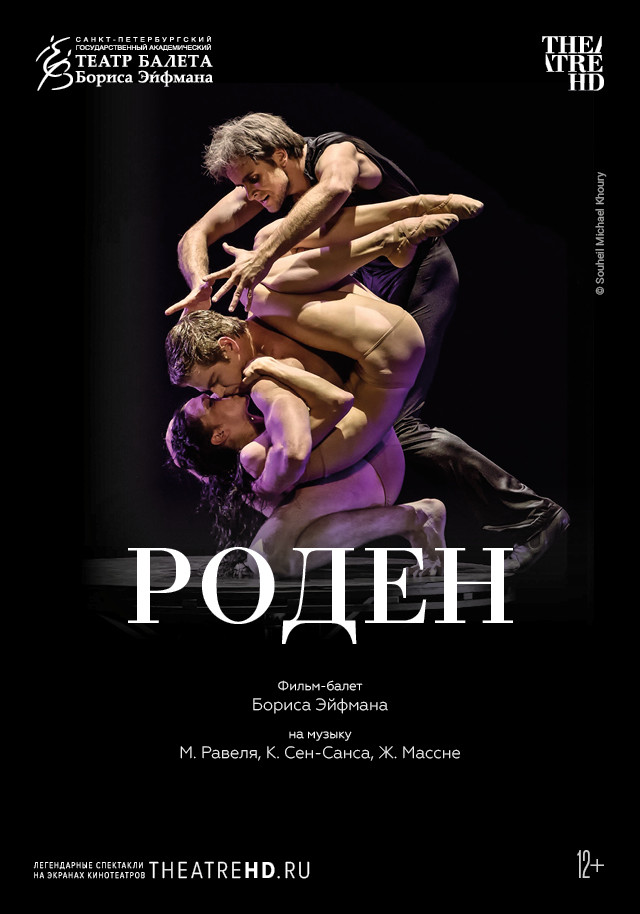The story of their love is truly a tragic one. For over 15 years Rodin and Claudel were one integral whole, both sensuously and creatively. The breakup of the lovers that ensued eventually was a fatal blow to the mental health of Camille leading to her tragic end. Half-forgotten, hardened, hopelessly impecunious, Camille goes mad. A paranoiac idea of a conspiracy against her being lead and inspired by Rodin himself incessantly torments the already weakened mind of the wretched woman. 30 long years had she spent in a mental clinic just to die in 1943, forlorn and completely forgotten by all and everybody.
Eifman’s Rodin, Her Eternal Idol is a comprehensively creative study of such a subject as how tragic may be people of genius’ lives. By resorting to the uniquely plastique of the modern psychological ballet, that was so brilliantly mastered by the choreographer in his other productions (Eugene Onegin, The Seagull, Anna Karenina, Russian Hamlet, etc.), Boris Eifman not only offers a new interpretation of the world of human passions studied masterfully by Rodin and Claudel, but creates a picture of the insoluble mystery of the creative process.
Boris Eifman:
“The story of life and love of Auguste Rodin and Camille Claudel is an amazing tale about an incredibly dramatic alliance of two artists where everything was entwined: passion, hatred and artistic jealousy. Spiritual and energy exchange between the two sculptors was an outstanding phenomenon: being so close to Rodin, Camille was not only an inspiration for his work helping him find a new style and create masterpieces, she also impetuously went through the development of her own talent becoming a great master of sculpture herself. Her beauty, her youth and her genius – all this was sacrificed to her beloved man.
After breaking up with Claudel the artist stays with devoted but unloved Rose Beuret. Camille tries to find her escape in work, but art critics do not accept her sculptures. In despair, Claudel destroys most of her works and plunges into the darkness of insanity. The wretched woman’s soul is being incinerated by pathological hatred towards her former teacher and lover, who, as Camille believes, has stolen her life and talent.
This new ballet reflects Rodin’s longing for his Muse, torments of his conscience, as well as Camille's delirium caused by the mental illness and saturated with painful obsessions – or rather that of the insane Erinys that the ruthless fate has turned her into.
In our performance, using the language of dance, we talk about passion, inner struggle and despair – of all those human spirit phenomena that were brilliantly expressed by Rodin and Camille in bronze and marble. To turn a moment carved in stone into an unrestrained, emotionally rich stream of body movements is what I was striving for while creating this new ballet performance.
Rodin, Her Eternal Idol is a reflection on the extreme price that people of genius have to pay for the creation of eternal masterpieces. And, of course, it is a reflection on those torments and mysteries of creative process that will always be of concern to any artist.”

